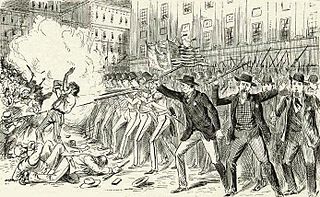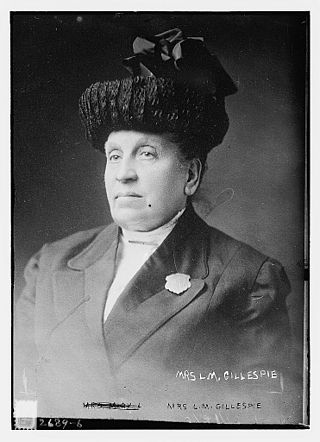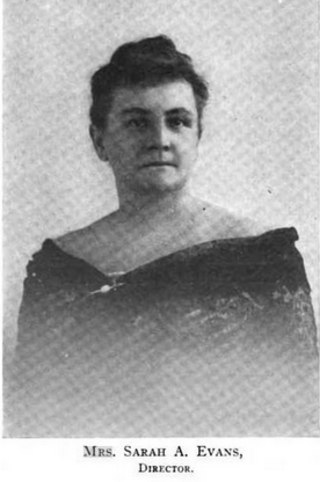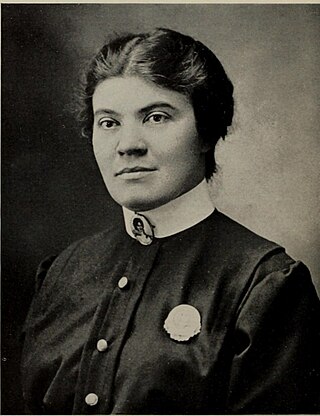
The Philadelphia Police Department is the police agency responsible for law enforcement and investigations within the City of Philadelphia, Pennsylvania. The PPD is one of the oldest municipal police agencies, fourth largest police force and sixth largest non-federal law enforcement agency in the United States. Since records were first kept in 1828, at least 289 PPD officers have died in the line of duty.

Sir Percy Joseph Sillitoe KBE DL was a chief constable of several police forces. He changed the role of radios, civilian staff, and women police officers within the police. He was later Director General of MI5, the United Kingdom's internal security service, from 1946 to 1953.
Elizabeth Constance Bather OBE was a British Women's Auxiliary Air Force and police officer who served as the second commander of the London Metropolitan Police's A4 Branch, from 1946 to 1960 and was the first female police officer in the United Kingdom to be promoted to Chief Superintendent when the rank was introduced into the Metropolitan Police in 1949.

Sri Lanka Police is the civilian national police force of the Democratic Socialist Republic of Sri Lanka. The police force is responsible for enforcing criminal and traffic law, enhancing public safety, maintaining order and keeping the peace throughout Sri Lanka. The police force consists of 43 Territorial Divisions, 67 Functional Divisions, 432 Police Stations with more than 84,000 people. The professional head of the police is the Inspector General of Police who reports to the Minister of Law and Order as well as the National Police Commission. The current Inspector General of Police is C.D. Wickramaratna.

Nepal Police is the national and primary law enforcement agency of Nepal. It is primarily responsible for maintaining law and order, prevention of crime and crime investigation within the jurisdiction determined by the Constitution of Nepal. Apart from its primary role, Nepal Police conducts a vast array of duties such as VIP protection, Security of Vital Installations, Traffic management, Secret services, Intelligence collection, Riot Control, Disaster management, Hostage rescue and various other Ceremonial roles. Nepal Police is currently led by Inspector General of Police Basanta Bahadur Kunwar since 24 March 2023. He is the 29th IGP of Nepal Police.

Alice Stebbins Wells was one of the first American-born female police officers in the United States, hired in 1910 in Los Angeles.

The New York City Police Department (NYPD) originates in the Government of New York City attempts to control rising crime in early to mid 19th century New York City. This increased crime was due to an increased population, caused primarily by poor Irish immigrants beginning in the 1820s. The City's reforms created a full-time professional police force modeled upon London's Metropolitan Police, itself only formed in 1829. Established in 1845, the Municipal Police replaced the inadequate night watch system which had been in place since the 17th century, when the city was founded by the Dutch as New Amsterdam.

Mary Sophia Allen OBE was a British political activist known for her defence of women's rights in the 1910–1920s and later involvement with British fascism. She is chiefly noted as one of the early leaders of the Women's Police Volunteers. Allen repeatedly sought to challenge or modernise the existing systems of the time, ensuring the Women's Police Service could become an auxiliary force after women were admitted into certain British police forces. She stood once for the House of Commons as an Independent Liberal, turning over her Women's Auxiliary Service to breaking the General Strike of 1926. Thereafter she met and talked with European fascists and anti-communist brigades, entailing frequent trips abroad and publicly joining the British Union of Fascists in 1939. In retirement Allen was an activist for animal rights.

L. M. Gillespie was one of the first women police officers to be employed by the city of Philadelphia, Pennsylvania.

The Department of the Army Civilian Police (DACP) are the civilian federal law enforcement bodies of the Department of the Army of the United States of America. There is no centralized DACP agency, with all civilian law enforcement agencies of the Army falling under the “DACP” title. The DACP are controlled jointly by the Department of the Army and the Department of Defense and as such, they are commonly referred to as DoD Police.

Mina Caroline Ginger Van Winkle was a crusading social worker, suffragist, and groundbreaking police lieutenant. From 1919 until her death in 1933, she led the Women's Bureau of the Metropolitan Police Department of the District of Columbia, and became a national leader in the protection of girls and other women during the law enforcement and judicial process. Her provocative statements about gender and morality in the jazz age brought her further national attention.
Thaddeus R. 'Ted' Skeer was an Prohibition-era bank robber, best known as an early associate of Harry Pierpont.

The integration of women into law enforcement positions can be considered a large social change. A century ago, there were few jobs open to women in law enforcement. A small number of women worked as correctional officers, and their assignments were usually limited to peripheral tasks. Women traditionally worked in juvenile facilities, handled crimes involving female offenders, or performed clerical tasks. In these early days, women were not considered as capable as men in law enforcement. Recently, many options have opened up, creating new possible careers.
Women in policing in the United States, colloquially known as women police or female cop, began as early as the 1890s. Women make up 12.6% of all U.S. sworn police officers in 2018. Employed largely as prison matrons in the 19th century, women took on more and increasingly diverse roles in the latter half of the 20th century. They face a particular set of challenges given the history of their entry into the profession, their low rates of participation, and the complex identities they negotiate in the work place. Women who work in law enforcement have struggled for years to gain acceptance in their workplace. Some of their biggest challenges are their lack of representation, stereotypes around women, and intersectionality.

Sarah Ann Shannon Evans was an American clubwoman and suffragist based in Portland, Oregon, president of the Oregon Federation of Women's Clubs from 1905 to 1915. She was the first woman in Portland to carry a police badge, in her work as the city's first Market Inspector. She also worked for state funding of free public libraries in Oregon.

Barbara Denis de Vitré OBE was a British police officer who rose to be the highest ranking in Britain as women became accepted members of the British police.

Dolphin Force is an elite unit of the Punjab Police that focuses on combating street crime. It was modeled after the Istanbul Police Dolphin Force and launched by the Chief Minister of Punjab, Shahbaz Sharif, in Lahore in 2016. Since then, it has been expanded to five other cities in the province, with a total of 696 policemen trained in its second phase.

The Militsiya of the Republic of Belarus is a law enforcement agency in Belarus responsible for regular policing duties in the country.

Mary Agnes Sullivan was a pioneering policewoman in New York City for 35 years. She was the first woman homicide detective in the New York City Police Department. She was also the first woman to make lieutenant, the second woman to achieve the rank of first grade detective, and the first woman inducted into the NYPD Honor Legion. She had a 35 year career with the NYPD, the last 20 of which was as director of the bureau of policewomen.

















